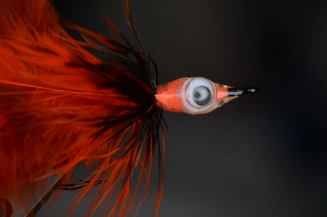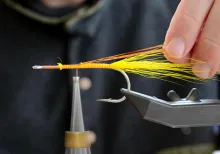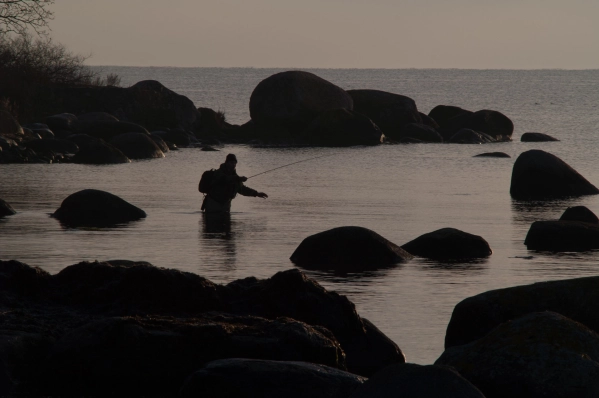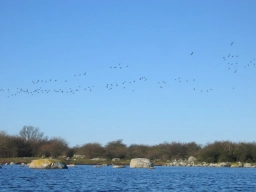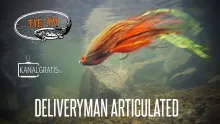Inspired by some large, colorful saddles and an ordinary feather duster, this pike fly is voluminous and voluptuous, easy to tie and easy to cast.
During my visit to the latest Danish Fly Festival I bought myself a set of dyed badger rooster saddles from Chevron Hackles, a UK hackle producer whose booth at this show always has an almost magic attraction on me and seems to draw me in and talk to me. Buy... more... hackle...
Now, it's not like I don't have any saddles already. I'm sure that if my wife knew how many I really have, she'd deem me even crazier than she does already, but then again... can a fly tyer ever have too many feathers? No way! No matter when and where I see a bin or a wall full of colorful saddles and necks, I cannot help it. I have to open some bags and let my fingers do the running.
Buy... more... hackle...
So I found myself pulling down bags from the pegs on the wall and piling them up for further scrutinizing and selection. I wound up buying three saddles in three beautiful red and orange hues, selected with large pike flies in mind.
During our annual autumn coastal trip I whipped up the first flies using these feathers, and wound up with a fly, which I dubbed the Pike Duster thanks to its likeness to a feather duster.
There's absolutely nothing revolutionary about the fly. Actually, it's more like a seen-it-done-it pattern, using a very simple stacking technique, where the aim is to create volume in the fly.
The pattern is a real feather eater, and it's almost impossible to tie in too many feathers, even though there is a limit to the sensible number. You want size and volume, but also have to take into consideration that the fly has to be cast at the end of a fly line.
Because of the number of feathers and the crudeness of the pattern, it's an obvious choice to use some large, coarse and soft feathers - maybe even some low grade ones - and a pattern like this is an obvious place to use the remains of saddles and necks where all the "good" feathers have been used.
I don't know whether the pike care about eyes on the flies, but I do and I like to put fairly large eyes on my pike flies. In the old days that meant playing with epoxy, but these days the modern UV resins makes it a breeze to add and secure eyes and to build up a head.
I use large and fairly heavy hooks for this fly, and recently bought a whole bunch of different pike hooks from David Lindsay's Pike and Predator Fly site with its large selection of hooks for pike flies sold at very reasonable prices.
I use sizes in the 4/0 to 8/0 range, which makes for some very big hooks, but also hooks that will stand up to the brutal force that pike can offer. The flies won't be lightweight, but kept in modest sizes (for pike flies at least), they won't be terrible to cast. My pike flies are typically in the 15-20 centimeter or 6-8 inch range, and have been known to catch large fish.
Tying steps
|
|
|
|
|
|
|
|
|
|
|
|
|
|
|
|
|
|
|
|
|
|
|
|
|
Fishing this fly isn't rocket science. Pike fishing generally isn't. I like to use a sinking line for pike, especially in the warmer part of the season when fishing on lakes, while I prefer a floater when the water is colder and at all times when fishing for pike in the brackish ocean water of the Baltic Sea. Pike fishing is often search fishing, often in the depth from a boat or casting towards the bank, reeds or weed and lily patches on the lookout for some action.
I often use a steel trace for my pike flies, which will ensure fewer lost flies and fish. Pike teeth are extremely sharp, and even the thickest and hardest mono leader is in danger of being cut once the fish is hooked. The steel makes the fly heavier to cast, but I prefer the weight over the risk.
- Log in to post comments






